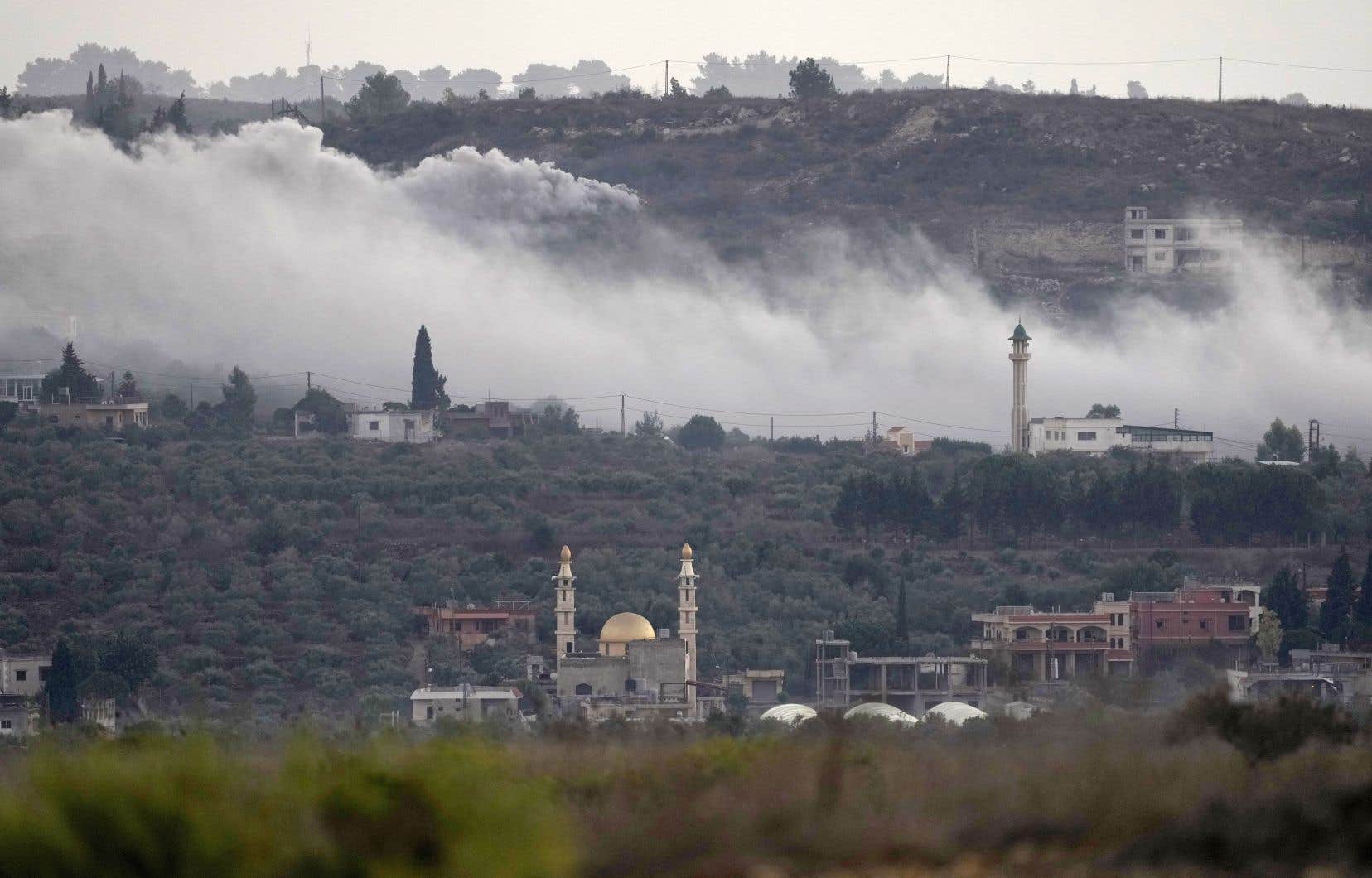Pressure, reaction. Fears that the new war between Hamas and Israel could degenerate into a broader regional conflict intensified at the start of the week, on the eve of a possible entry of Israeli ground forces into the Gaza Strip. A conflagration that the diplomatic networks of several countries, including the United States, are now seeking to fend off, 9 days after the Hamas terrorist attack which put the entire region back on a tipping point.
What are the warning signs of an escalation?
On Sunday, clashes intensified in northern Israel, along the border with Lebanon, between the Hebrew state and Hezbollah, the militia supported by Iran which controls southern Lebanese territory. The missile attacks of this other terrorist organization on Israel triggered a response with artillery fire and airstrikes.
On the sidelines of these tensions on this second front, Iran added fuel to the fire through the voice of its Minister of Foreign Affairs: visiting Qatar, a country allied with Tehran and financial support of Hamas, Hossein Amir -Abdollahian assured that a “widening of the conflict” was possible. “If the Zionist regime’s attacks on the defenseless population of Gaza continue, no one can guarantee control of the situation,” he added.
The man has led meetings in recent days in Iraq, Lebanon and Syria, countries allied and supportive of Hezbollah. He also met Hamas political leader Ismail Haniyeh in Doha and agreed with him to create “a broader front against Israel,” according to IRNA, the official Iranian news agency.
According to a person close to the Iranian government, a meeting was held on Sunday evening in a Hezbollah command center in Beirut, the Lebanese capital, between the group and Iran, to assess the exploitation of the security weakness of Israel that the attacks of October 7 revealed. Nearly 1,400 Israelis lost their lives in these massacres.
Intensified fighting in northern Israel could quickly overwhelm Israeli positions there, with much of Tel Aviv’s troops now concentrated further south along the Gaza Strip.
On Monday, Israeli Defense Minister Yoav Gallant warned that the price of this war was going to be “very high”, but that his country was going to “win it for Israel, for the Jewish people and for the values in which” Israelis believe. and Americans, he said alongside Antony Blinken. A sign of international anxiety in the face of an escalation in this conflict, the United States Secretary of State was visiting the Jewish state for the second time in 5 days.
For the former American ambassador to Israel, Martin S. Indyk, the “potential for propagation [de ce conflit] not only in Lebanon but beyond Lebanon is now very high,” he said, quoted by the New York Times. “This is why the administration [Biden] is working hard to prevent it, something it normally would not have had to do if there had not been such a major blow to Israel’s defense system. »
How is diplomacy working to bring down the heat in the region?
Faced with the seriousness of the situation, Joe Biden put his domestic political agenda on hold on Monday, canceling a planned trip to Colorado, to stay in Washington and focus on the risk of regional escalation of the conflict, announced the White House. The American president is also reportedly considering an official trip to Israel in the coming days to try to defuse the crisis, but the details of this visit have not been revealed.
Sunday, on CBS, the president’s security adviser, Jake Sullivan, admitted that private messages had been sent to the Tehran regime in recent days, through intermediaries, to dissuade the Iranian theocracy from encourage a conflagration in the region. These parallel networks – the United States does not have diplomatic relations with Iran – generally pass through Qatar, the Sultanate of Oman and China.
“We cannot rule out that Iran may choose to engage directly in one way or another,” continued Jake Sullivan. “We must prepare for all eventualities.”
Prevention before curing: without fanfare, Washington also blocked access last week to the $6 billion account granted to Tehran a few weeks ago for humanitarian aid as part of a controversial negotiation between the two countries. The measure aims to prevent this sum from being used to strengthen Hamas or Hezbollah in their existential and fanatical war against Israel. Treasury Secretary Janet L. Yellen also announced that the United States may consider additional sanctions against Iran.
With two aircraft carriers sent to the region, Washington fears that a deterioration in security could force the United States to enter directly into this conflict, by air and sea, to defend its closest Middle Eastern ally, Israel. On the threshold of an election year, Joe Biden could pay the price for his country’s return to the “forever wars” from which Washington has sought to move away for several years.
On Monday, Russian President Vladimir Putin entered into the diplomatic ballet induced by the threat of an Israeli ground intervention in Gaza. The Kremlin says it has spoken with Iranian leaders Ebrahim Raïssi and Syrian leaders Bashar al-Assad, but also Egyptian President Al-Sissi, that of the Palestinian Authority Mahmoud Abbas and Israeli Prime Minister Benjamin Netanyahu, in order to express “ the position” of Russia on the crisis and listen to the “considerations” of these regional actors.
Putin’s diplomatic adviser, Yuri Ushakov, was quoted by Russian news agencies as saying that “in the context, the main [pour Moscou] was to immediately cease fire and begin a process of political settlement.” He also called for “active and strong measures” to prevent escalation.
With Agence France-Presse
